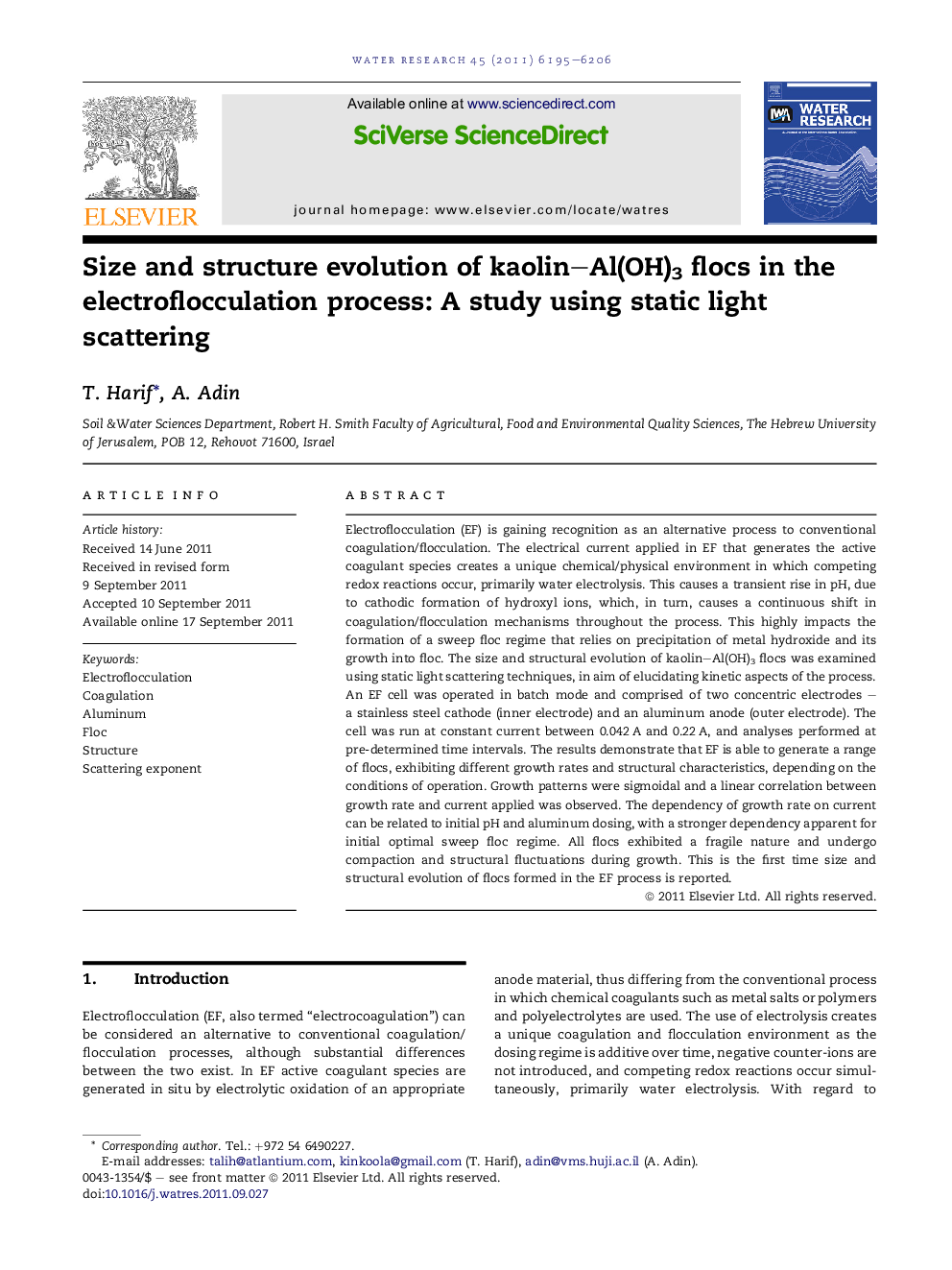| کد مقاله | کد نشریه | سال انتشار | مقاله انگلیسی | نسخه تمام متن |
|---|---|---|---|---|
| 4482703 | 1316866 | 2011 | 12 صفحه PDF | دانلود رایگان |

Electroflocculation (EF) is gaining recognition as an alternative process to conventional coagulation/flocculation. The electrical current applied in EF that generates the active coagulant species creates a unique chemical/physical environment in which competing redox reactions occur, primarily water electrolysis. This causes a transient rise in pH, due to cathodic formation of hydroxyl ions, which, in turn, causes a continuous shift in coagulation/flocculation mechanisms throughout the process. This highly impacts the formation of a sweep floc regime that relies on precipitation of metal hydroxide and its growth into floc. The size and structural evolution of kaolin–Al(OH)3 flocs was examined using static light scattering techniques, in aim of elucidating kinetic aspects of the process. An EF cell was operated in batch mode and comprised of two concentric electrodes – a stainless steel cathode (inner electrode) and an aluminum anode (outer electrode). The cell was run at constant current between 0.042 A and 0.22 A, and analyses performed at pre-determined time intervals. The results demonstrate that EF is able to generate a range of flocs, exhibiting different growth rates and structural characteristics, depending on the conditions of operation. Growth patterns were sigmoidal and a linear correlation between growth rate and current applied was observed. The dependency of growth rate on current can be related to initial pH and aluminum dosing, with a stronger dependency apparent for initial optimal sweep floc regime. All flocs exhibited a fragile nature and undergo compaction and structural fluctuations during growth. This is the first time size and structural evolution of flocs formed in the EF process is reported.
Figure optionsDownload high-quality image (96 K)Download as PowerPoint slideHighlights
► Electroflocculation was performed using an aluminum anode.
► Floc evolution patterns showed stages similar to conventional flocculation.
► Floc growth was found to have a stronger dependency on higher currents.
► Higher currents applied at pH 6.5 were found to initiate higher growth rates.
► Different structural characteristics were observed, depending on operating conditions.
Journal: Water Research - Volume 45, Issue 18, 15 November 2011, Pages 6195–6206